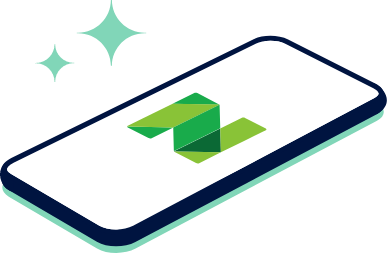Rover vs. Wag: Which App Is Better for Making Money?
Rover wins on fees, but Wag may land you a pet-sitting gig quicker.

Many, or all, of the products featured on this page are from our advertising partners who compensate us when you take certain actions on our website or click to take an action on their website. However, this does not influence our evaluations. Our opinions are our own. Here is a list of our partners and here's how we make money.
Rover vs. Wag, Wag vs. Rover — which is the better dog-walking app for side hustlers? The services have similar sign-up requirements and offer flexible schedules, but their payment details and caregiving opportunities differ some.
For example, Rover’s commission fee is less than what Wag charges. On the other hand, the way Wag matches available walkers with owners for short-order requests may lead to faster bookings than with Rover.
Dig into the details so you can pick the pet-sitting side hustle service you like best.
Rover pet-sitting
Rover offers opportunities to make money as an independent contractor through dog-walking, pet-boarding, doggy day care, housesitting and drop-in services.
How does Rover work?
First, you need to create a profile through the Rover website or app. This includes adding basic contact information, a photo, your services and rates. You need the Rover app if you plan to do drop-in visits, doggy day care or dog-walking services.
You’ll set preferences, such as the times you’re available and what size dogs you’re comfortable working with. Then, fill in your experience, add photos, request testimonials from past clients, take Rover’s quiz and submit to a background check.
There is a $49-$79 profile review fee. Most profiles are approved within 20 business days.
How to get booked: Once approved, pet owners can view your profile and availability and then send you a booking request.
What are the requirements for Rover?
In order to become a dog walker or provide other services on Rover, you must:
- Be 18 years or older and live in an area where Rover operates.
- Complete your profile and pass a background check.
- Have the latest version of the Rover app.
- Live in a residence that allows pets (if you plan to board dogs in your home).
Check with your local government for additional requirements.
How much does Rover pay?
The amount you make depends on the service(s) you provide and how often you work. Those who offer overnight dog or cat boarding can make twice as much as sitters who don’t, the company says. You can also earn and keep 100% of tips.
How much does Rover take?
Rover allows you to set your own rate, but takes a 20% service fee from each booking.
How to get paid on Rover
Your funds are available to withdraw two days after completing a service with Rover. You get paid via direct deposit. To set up payment, you’ll need your Social Security number and bank account information.
Stress less. Track more.
See the full picture: savings, debt, investments and more. Smarter money moves start in our app.
Wag pet-sitting
Wag is another platform for dog walking, pet sitting, boarding and drop-in gigs. You can also get paid for in-home dog and cat training, a service Rover only offers virtually and through a third-party provider. Like with Rover, Wag caregivers work as independent contractors, not employees.
How does Wag work?
Complete an application online or in the Wag app to get started. Similar to Rover, you have to create a profile, note previous experience with dogs, take a five-to-10-minute quiz on dog safety and care, and pass a background check. Wag charges a $49.95 application processing fee.
Wag strongly suggests that you get endorsements in writing from family or others who can vouch for your experience to give you more credibility as a walker or sitter. Applications take an average of 14 days to process.
How to get booked: Pet owners set up bookings with times, dates and instructions. Owners will either choose you specifically to provide care, or Wag will automatically match caregivers with pet owners for quick requests. You’ll get a notification and can confirm through the app.
» MORE: 7 of the best money-making apps
What are the requirements for Wag?
Before you submit an application, make sure you’re eligible for Wag. You need to:
- Be age 18 or older and legally authorized to work in the United States.
- Live in a city where Wag operates.
- Live in a residence that allows pets (if you plan to board dogs in your home).
- Download the Wag Pet Caregiver app.
How much does Wag pay?
Earnings vary based on factors like the services you offer, rates you set and the length of time you provide care. You also keep 100% of tips you earn with Wag.
The average cost of a 20-minute walk is $12.75 to $19.99 for one dog, according to a Wag blog post from 2023. To earn more, you could do a 30-minute walk, which has an average cost of $17 to $26.99 for one dog. Hour-long walks cost an average of $25.50 to $36.99.
Dog sitters on Wag charge an average of $39 to $59 for one dog to sleep over. You can get paid extra if an owner has more than one dog or requests recurring walks.
How much does Wag take?
Here’s the kicker: Wag takes a 40% cut of your services. That said, you can set your own rates with Wag, so it’s possible to plan for the bigger take in the price you charge.
How to get paid on Wag
Wag’s weekly pay period runs from Tuesday through Monday. Payments are issued to your Stripe-connected bank account every Friday.
Stress less. Track more.
See the full picture: savings, debt, investments and more. Smarter money moves start in our app.
Rover vs. Wag: Which is the better dog-walking app?
Mostly similar: Rover and Wag feature the same services, with a couple of exceptions. Both allow you to walk, sit or board pets for money and earn tips on top. But you can run a doggy day care only through Rover, and you’ll have to use Wag to work as a trainer.
Rover takes less: Seeking work that’s available through either app? Rover might be the way to go to keep more of the money you earn; its 20% commission fee is significantly lower than Wag’s 40% fee. But the ability to be booked on demand with Wag could get you a job quicker.
Try both: If you’re serious about dog-walking, you can sign up for both the Rover and Wag apps and compare your results over time.
Remember, you’ll work as an independent contractor, rather than an employee, with either. That means you won’t receive employment benefits, such as insurance, or have income tax automatically withheld. Consider these costs before signing up to work in the gig economy.
Article sources
NerdWallet writers are subject matter authorities who use primary,
trustworthy sources to inform their work, including peer-reviewed
studies, government websites, academic research and interviews with
industry experts. All content is fact-checked for accuracy, timeliness
and relevance. You can learn more about NerdWallet's high
standards for journalism by reading our
editorial guidelines.
Related articles











